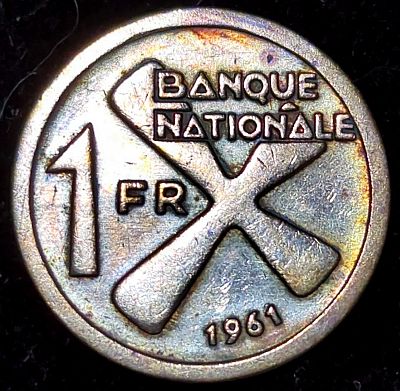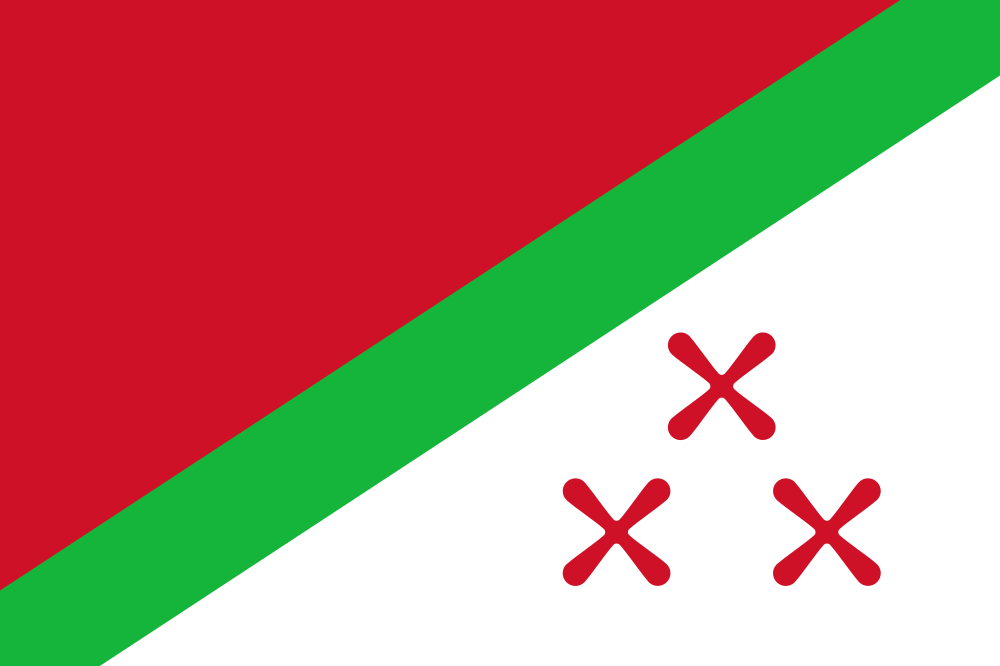A coin from a breakaway state depicting an earlier proto-currency

History
The Democratic Republic of the Congo (DRC), known from 1991 – 1997 as Zaire, is a country in central sub-Saharan Africa. About the size of western Europe, it is home to the world’s second largest rainforest.
Formerly a series of Kingdoms, the land was taken over by King Leopold II of Belgium in 1885, who declared it his private property. As the brutality of his reign in the region became more widely known, Leopold was forced to turn the territory over to the country of Belgium. From 1908 – 1960. The now Belgian colony was known as “Belgian Congo”.
Independence
During the 1950s, the people of the Congo became louder in calls for independence. In 1959, the Belgian government organised elections, hoping to install a puppet government. A large protest movement resulted in true independence on 30th June 1960. Fighting began between tribes during parliamentary elections in May and further fighting occurred at independence in June. The Congolese troops of the Force Publique (armed police) mutinied against their Belgian officers. Europeans and their property were attacked, and Belgian refugees fled. In the rich mining province of Katanga, Moise Tshombe, supported by Belgian troops and White mercenaries, proclaimed an independent republic. After appeals from the government, the United Nations dispatched a peacekeeping force to replace the Belgians. Over the next five years there was continued fighting and several coups. Independent regimes were established at different times in Katanga, Stanleyville, and Kasai.
State of Katanga
Less than two weeks after the country gained independence, a politician named Moise Tshombe declared the southernmost province of the Congo to be an independent nation called the State of Katanga. Katanga, with its copperbelt and lucrative mining operations was the wealthiest province of the Congo.
Katanga Cross
The coin features the breakaway state’s name and a bunch of bananas.

The reverse features the year and denomination, and a large cross shaped design. This is known as a Katanga Cross.
Due to its scarcity, the “red” metal was associated with kings, leadership and wealth, all important factors in its use as currency. While unrefined lumps of copper were used as currency because it was fairly easy to standardize their size and value, the copper currency that required refined casting techniques and possessed artistic value were the ingots shaped as crosses (handa). By 1400 A.D. two distinctive types had developed; the first was shaped like an “H”; the other was formed like an “X”. Often found buried with prominent individuals, originally tied to their chest, later found near their hands or waist. By the 16th and 17th centuries these were also used in exchange.
Cast directly on the ground in numerous sizes, the most common was 24cm (9 1/2″) and weighed up to 1.8kg (4lb). Originally mostly larger pieces were made, however smaller pieces were created as demand for their use in commerce rose. They were accepted in trade throughout central Africa. Their value varied, but was standardised in smaller geographical regions.
As such a prominent local symbol of wealth, it is not surprising that the Banque Nationale du Katanga, placed them on the only three coins issued during independence. These were the 1 and 5 Franc bronze coins, and a 5 Francs gold coin. The coins were minted by Kings Norton Metal Company, Birmingham, United Kingdom.
Three red Katanga crosses also appeared on the flag of Katanga.

Although Katanga was not officially recognised by the UN, the coins did get their own KM series by Krause. This 1 Franc coin was KM1.
Kangan independence lasted three years. In 1963 United Nations Operation in the Congo (ONUC) forces overwhelmed the Katangan military. Moise Tshembe, and the region was reintegrated with the rest of the country as Katanga Province.


Leave a Reply